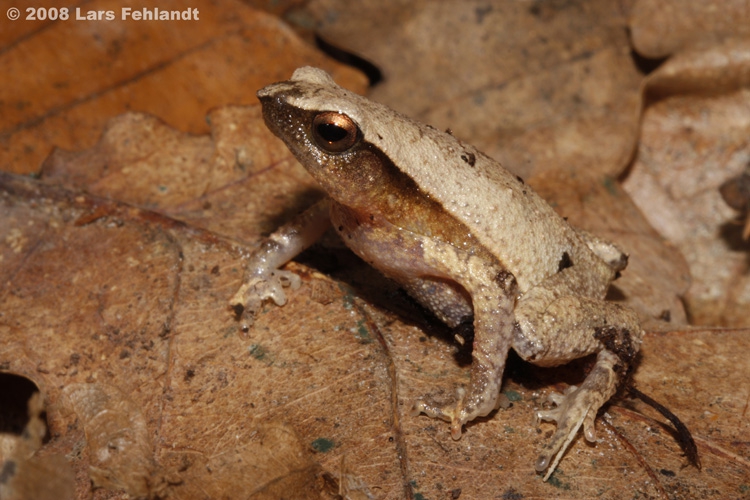| Citation |
IUCN SSC Amphibian Specialist Group 2018. Kalophrynus palmatissimus. The IUCN Red List of Threatened Species 2018: e.T57843A90961057. http://dx.doi.org/10.2305/IUCN.UK.2018-2.RLTS.T57843A90961057.en. Downloaded on 09 May 2019. |
Description |
Geographic Range
NATIVE
Extant (resident)
Malaysia (Peninsular Malaysia)
NUMBER OF LOCATIONS
1-5
UPPER ELEVATION LIMIT
300 metres
LOWER ELEVATION LIMIT
0 metres
Geographic Range in detail
ESTIMATED AREA OF OCCUPANCY (AOO) (KM²)
CONTINUING DECLINE IN AREA OF OCCUPANCY (AOO)
EXTREME FLUCTUATIONS IN AREA OF OCCUPANCY (AOO)
ESTIMATED EXTENT OF OCCURRENCE (EOO) (KM²)
2192.39
CONTINUING DECLINE IN EXTENT OF OCCURRENCE (EOO)
EXTREME FLUCTUATIONS IN EXTENT OF OCCURRENCE (EOO)
CONTINUING DECLINE IN NUMBER OF LOCATIONS
EXTREME FLUCTUATIONS IN THE NUMBER OF LOCATIONS
RANGE DESCRIPTION
This species is currently known from four states of Peninsular Malaysia: Pahang (Nurulhuda et al. 2015), Selangor (Kaviarasu et al. 2013), Negeri Sembilan (Kiew 1984, Ali Haji et al. 1999) and Johor (Wood et al. 2008, Chan et al. 2010, Shahriza et al. 2012). All records are from below 300 m asl. It is likely that this species occurs more widely (Malaysia Red List Assessment Workshop January 2018), but the extent of occurrence (EOO) of its currently known range is 2,192 km2 which represents one to five threat-defined locations.
Population
CURRENT POPULATION TREND
Decreasing
NUMBER OF MATURE INDIVIDUALS
POPULATION SEVERELY FRAGMENTED
No
CONTINUING DECLINE OF MATURE INDIVIDUALS
Population in detail
EXTREME FLUCTUATIONS
NO. OF SUBPOPULATIONS
CONTINUING DECLINE IN SUBPOPULATIONS
EXTREME FLUCTUATIONS IN SUBPOPULATIONS
ALL INDIVIDUALS IN ONE SUBPOPULATION
NO. OF INDIVIDUALS IN LARGEST SUBPOPULATION
DESCRIPTION
Little information is available about its population status, but it seems to be quite common. Due to ongoing decline in the extent and quality of habitat, the population is suspected to be decreasing.
Habitat and Ecology
SYSTEM
Terrestrial
HABITAT TYPE
Forest
GENERATION LENGTH (YEARS)
CONGREGATORY
MOVEMENT PATTERNS
Not a Migrant
CONTINUING DECLINE IN AREA, EXTENT AND/OR QUALITY OF HABITAT
Yes
Habitat and Ecology in detail
HABITAT AND ECOLOGY
This species occurs in lowland dipterocarp rainforests and associated bamboo stands (Kiew 1984, Manthey and Grossmann 1997). It cannot tolerate disturbance to its habitat (Malaysia Red List Assessment Workshop January 2018). This species breeds by larval development, and reproduction sites include water-filled bamboo stumps and other cavities.
CLASSIFICATION SCHEME
Habitats Suitability Major importance
1. Forest 1.6. Forest - Subtropical/Tropical Moist Lowland Suitable Yes
Threats
Residential & commercial development
Housing & urban areas
Commercial & industrial areas
Agriculture & aquaculture
Annual & perennial non-timber crops
Energy production & mining
Mining & quarrying
Transportation & service corridors
Roads & railroads
Threats in detail
THREATS
Habitat within this species range has been converted to non-timber plantations. It is also threatened by infrastructure development, including expanding human settlements, commercial and industrial areas, and road construction. Quarrying for granite may be a potential future threat for the subpopulation occurring in Panti Forest Reserve (Malaysia Red List Assessment Workshop January 2018).
CLASSIFICATION SCHEME
Threats Timing Stresses Scope Severity Impact score Invasive species Virus
1. Residential & commercial development 1.1. Housing & urban areas Ongoing
1. Ecosystem stresses 1.1. Ecosystem conversion
1.2. Ecosystem degradation
Low Impact: 3
1.2. Commercial & industrial areas Ongoing
1. Ecosystem stresses 1.1. Ecosystem conversion
1.2. Ecosystem degradation
Low Impact: 3
2. Agriculture & aquaculture 2.1. Annual & perennial non-timber crops 2.1.3. Agro-industry farming Ongoing
1. Ecosystem stresses 1.1. Ecosystem conversion
1.2. Ecosystem degradation
Low Impact: 3
3. Energy production & mining 3.2. Mining & quarrying Future
1. Ecosystem stresses 1.1. Ecosystem conversion
1.2. Ecosystem degradation
No/Negligible Impact: 1
4. Transportation & service corridors 4.1. Roads & railroads Ongoing
1. Ecosystem stresses 1.2. Ecosystem degradation |

